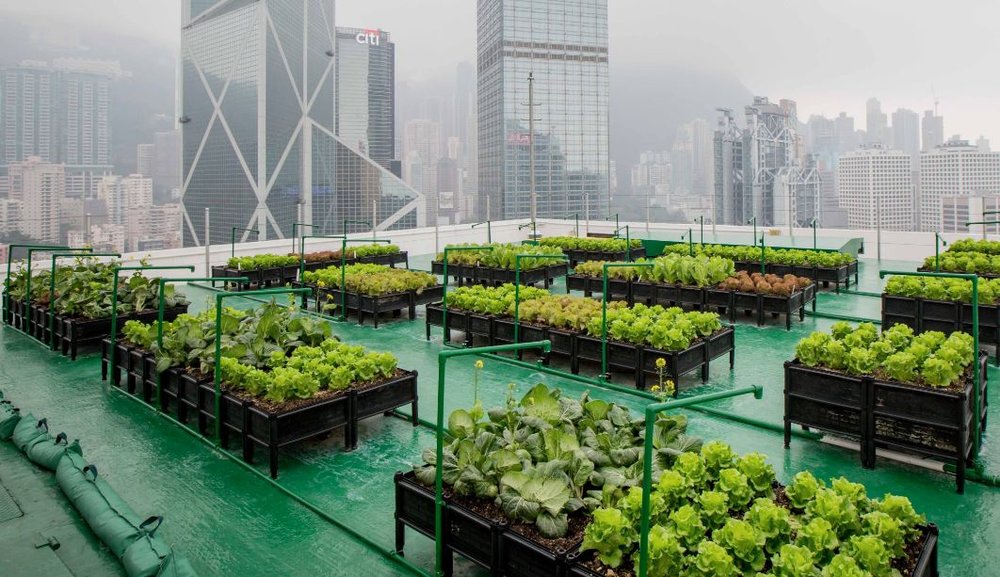Some Known Incorrect Statements About City Blooming
A Biased View of City Blooming
Table of ContentsCity Blooming Things To Know Before You Get ThisNot known Factual Statements About City Blooming The smart Trick of City Blooming That Nobody is Talking AboutThe Single Strategy To Use For City BloomingThe 7-Minute Rule for City Blooming
Interested in expanding food offer for sale in the City of Chicago? Thinking of beginning an area yard? Modifications to the Chicago Zoning Statute permit farming usages like neighborhood yards and metropolitan ranches in lots of parts of the city. Below is a listing of frequently asked concerns concerning the regulations and guidelines that growers need to think about when planning a city farming project.
The zoning modification does not modify any type of various other codes dealing with composting, structure authorizations, buying or renting City owned residential or commercial property, organization licenses or ecological contamination. There are existing codes that control these problems and they continue to be completely effect and may apply to your project. Neighborhood yards are normally owned or taken care of by public entities, public companies or community-based organizations and maintained by volunteers.
Urban ranches grow food that is meant to be offered, either on a not-for-profit or for-profit basis. Due to their commercial purpose, urban farms require a service certificate.
City Blooming Fundamentals Explained
Composting is permitted yet just for plant material that is produced and used on website. The quantity of garden compost material can not exceed 25 cubic yards at any given time according to the standards in 7-28-715 of the City's Municipal Code. Yes. Since the soil at a lot of brand-new garden websites needs changing, compost, dirt, wood chips, or other products can be acquired to create or improve the expanding space - landscaping.

If a building license is called for then the hoophouse will be taken into consideration an accessory building. You can locate out even more concerning the building permit needs by getting in touch with the Department of Buildings. The 25,000-square-foot dimension limit is intended to avoid a single community garden from dominating a given block or taking away from the block's existing residential or commercial character.
The limit does not apply to yards found in Public Open Area (POS) districts. Can there be even more than one community garden that is 25,000 square feet on a single block? Yes. The size limit puts on individual yards, not to private blocks. No. Fence is not needed, however, gardens that have huge parking lot may be called for to install fence or various other landscaping attributes.
About City Blooming
B1 & B2 areas need that all industrial usage tasks be carried out indoors. Is fencing needed for urban ranches? Fences might be needed, along with landscaping and testing, for specific vehicle parking areas and exterior work or storage space areas depending on location and the details activity taking place.
Urban ranches require structure licenses and zoning authorizations prior to building and construction (eco-friendly practices). Various other types of city evaluation may be needed depending on specific frameworks, tasks, size, landscaping, licensing, public health and stormwater management problems.
Yes. The type of permit is identified by what is taking place at the site. The Division of Business Matters and discover here Consumer Security can aid figure out the specific sort of company permit that's required. Yes. Off road car parking is needed for the majority of business jobs in Chicago. The called for variety of garage is based on the number of workers dealing with website and not the square footage of the growing area.
Excitement About City Blooming

An urban ranch can market garden compost material generated on website, nonetheless, the procedure needs to conform with the policies in 7-28-715 of the Chicago Municipal Code. Aquaponic systems are allowed indoors on city ranches in lots of zoning districts.
Up to 5 hives or nests of honey bees might be maintained as an accessory use. Beekeepers must sign up with the Illinois Division of Agriculture. To find out more about the recommended zoning change you may speak to the Division of Housing and Economic Growth, Bureau of Planning and Zoning at 312.744.8563.
Farming in cities and city locations A metropolitan farm in Chicago. Urban agriculture refers to various practices of growing. https://cityblooming3.wordpress.com/2024/06/27/city-gardening-cultivating-green-spaces-in-urban-jungles/, processing, and distributing food in metropolitan areas. The term also relates to the location tasks of animal husbandry, aquaculture, beekeeping, and horticulture in an urban context. Urban farming is identified from peri-urban farming, which takes area in country areas at the side of residential areas.
Not known Factual Statements About City Blooming
It can include a movement of natural cultivators, "foodies" and "locavores", that seek to create social media networks established on a common values of nature and area holism. These networks can establish using official institutional support, coming to be integrated right into regional town as a "change town" activity for lasting urban advancement.
The extra straight access to fresh vegetable, fruit, and meat products that may be understood via city agriculture can improve food safety and food safety and security while decreasing food miles, bring about reduced greenhouse gas emissions, consequently adding to climate modification reduction. Some of the initial proof of metropolitan farming comes from Mesopotamia.